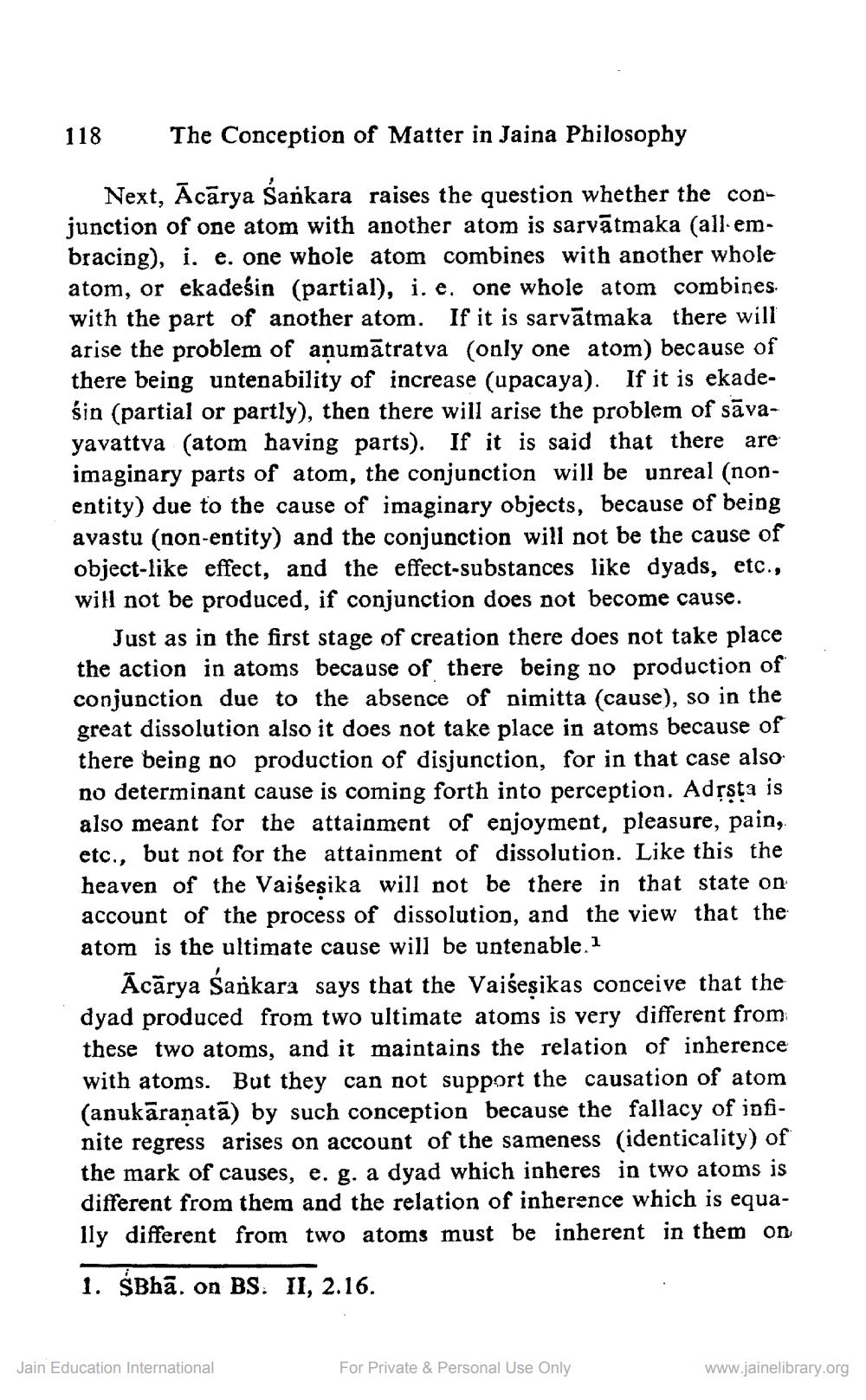________________
118
The Conception of Matter in Jaina Philosophy
Next, Ācārya Sankara raises the question whether the conjunction of one atom with another atom is sarvātmaka (all-embracing), i. e. one whole atom combines with another whole atom, or ekadesin (partial), i. e. one whole atom combines. with the part of another atom. If it is sarvātmaka there will arise the problem of aņumātratva (only one atom) because of there being untenability of increase (upacaya). If it is ekadesin (partial or partly), then there will arise the problem of sāvayavattva (atom having parts). If it is said that there are imaginary parts of atom, the conjunction will be unreal (nonentity due to the cause of imaginary objects, because of being avastu (non-entity) and the conjunction will not be the cause of object-like effect, and the effect-substances like dyads, etc., will not be produced, if conjunction does not become cause.
Just as in the first stage of creation there does not take place the action in atoms because of there being no production of conjunction due to the absence of nimitta (cause), so in the great dissolution also it does not take place in atoms because of there being no production of disjunction, for in that case also no determinant cause is coming forth into perception. Adrsta is also meant for the attainment of enjoyment, pleasure, pain, etc., but not for the attainment of dissolution. Like this the heaven of the Vaiśesika will not be there in that state on account of the process of dissolution, and the view that the atom is the ultimate cause will be untenable. 1
Ācārya Sankara says that the Vaiśesikas conceive that the dyad produced from two ultimate atoms is very different from these two atoms, and it maintains the relation of inherence with atoms. But they can not support the causation of atom (anukāranatā) by such conception because the fallacy of infinite regress arises on account of the sameness (identicality) of the mark of causes, e. g. a dyad which inheres in two atoms is different from them and the relation of inherence which is equally different from two atoms must be inherent in them on
1. $Bhā. on BS. II, 2.16.
Jain Education International
For Private & Personal Use Only
www.jainelibrary.org




